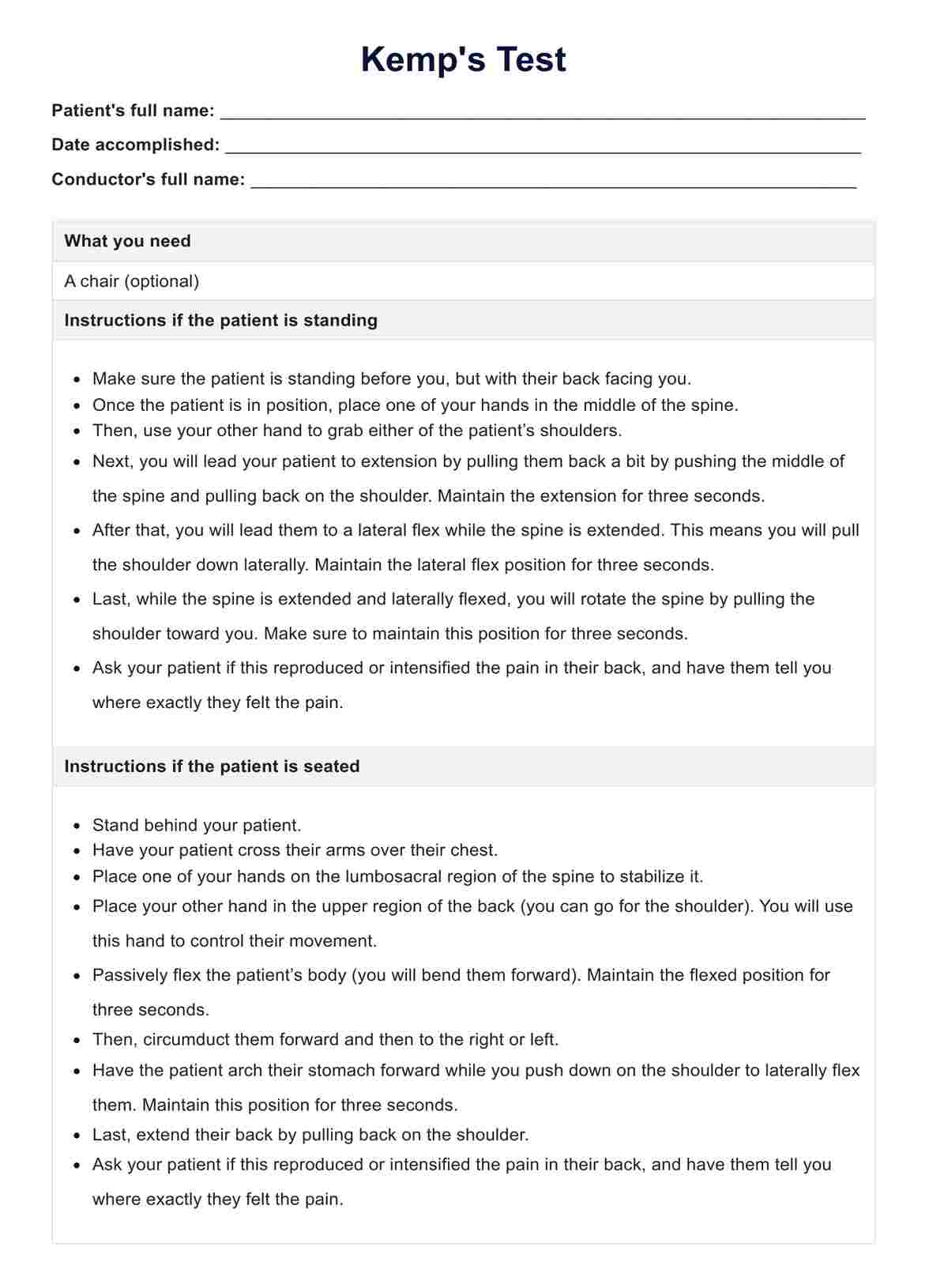The Kemp's Test can take 1 to 5 minutes due to the simple instructions.

Kemp’s Test
Learn how Kemp's Test can assess spine, leg, and back concerns through this guide.
Kemp’s Test Template
Commonly asked questions
Yes. It is painful in the sense that it seeks to reproduce the pain that patients are feeling. The pain is a requirement because it'll help professionals make a designation and determine if the problem has something to do with facet joints or some other part of the spine. Whatever pain the patient feels will be caused by a pre-existing condition. However, it should never cause extensive pain.
Yes. It helps professionals determine the possible problem. While it may not identify the specific problem, the test results will serve as groundwork to determine what other tests need to be conducted for diagnosing pain-related pathologies in the spine, leg, or back.
EHR and practice management software
Get started for free
*No credit card required
Free
$0/usd
Unlimited clients
Telehealth
1GB of storage
Client portal text
Automated billing and online payments











